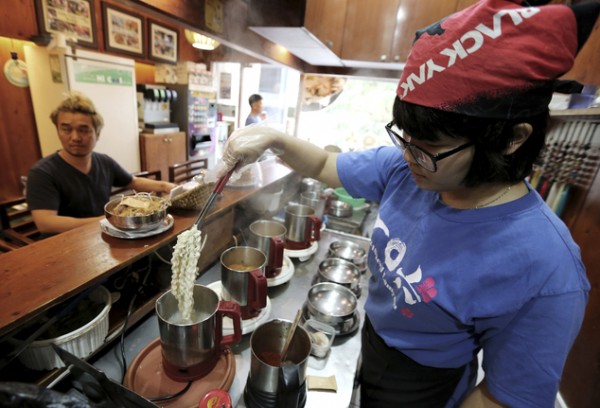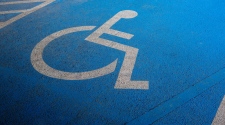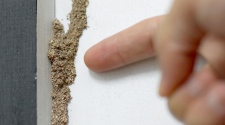Kim Min-koo has a simple answer to new American explore that hits South Korea where it harms – in the noodles. Tipsy and hungry just after day break, he rips the top off a vessel of his dearest fast food, wobbling on his feet yet disobedient over a report that connections moment noodles to wellbeing dangers.
“It is highly unlikely any study is going to prevent me from consuming this,” says Kim, his red face beaded with sweat as he adds heated water to his noodles in a Seoul accommodation store. His mouth waters, wooden chopsticks balanced over the softening strands, his glasses misted by steam. Finally, he skewers an elusive load, lets forward a compelling, noodle-cooling impact of air and begins slurping.

“This is the best minute – the first chomp,” Kim, an independent film editorial manager who revels around five times each week, says between swallows. “The taste, the emanation, the chewiness – its simply great.”
Moment noodles convey a softened school understudy emanation up America, yet they are a crucial, even energetic, some piece of life for a lot of people in South Korea and crosswise over Asia. Thus the passionate acid reflux created by a Baylor Heart and Vascular Hospital study in the United States that interfaced moment noodles utilization by South Koreans to a few dangers for coronary illness.
The study has incited sentiments of injured pride, gentle blame, stiff-necked safety, even patriotism among South Koreans, who consume more moment noodles for every capita than anybody on the planet. A large number of those questioned pledged, in the same way as Kim, not to stop.
Other noodle mates presented systems they swore kept them sound: taking Omega-3, including vegetables, utilizing less flavoring, keeping away from the soup. Some rejected the study on the grounds that the doctor’s facility included is situated in cheeseburger-gobbling America.
The warmed response is mostly clarified by the inescapability here of moment noodles, which, for South Koreans, normally mean the zesty, salty “ramyeon” that expenses short of what a dollar a bundle. Exclusively wrapped disposable dishes and containers are all around: Internet bistros, libraries, trains, ice-skating arenas.
Indeed at the part of the way purpose of a trail winding up South Korea’s most noteworthy mountain, explorers can invigorate themselves with container noodles.
Elderly South Koreans regularly feel profound sentimentality for moment noodles, which entered the neighborhood showcase in the 1960s as the nation started tearing’s out of the neediness and devastation of the Korean War into what’s presently Asia’s fourth-greatest economy.
A lot of people strikingly recall their first taste of the once-colorful treat, and hard-drinking South Koreans consider moment noodles a perfect solution for hurting, liquor laden stomaches and consequent headaches.
Some individuals won’t leave the nation without them, stressed they’ll need to consume sub-par noodles abroad. What could be preferred at soothing achiness to go home over a salty shot of ramyeon?
“Ramyeon is similar to kimchi to Koreans,” says Ko Dong-ryun, 36, a specialist from Seoul, alluding to the fiery, matured vegetable dish that graces most Korean dinners. “The odor and taste make a moment feeling of home.”
Ko fills a large portion of his baggage with moment noodles for his universal business voyages, a lesson he adapted in the wake of accepting on his first excursion that three bundles would suffice for six days. “Man, was I not right. From that point forward, I generally verify I pack enough.”
The U.s. study was focused around South Korean reviews from 2007-2009 of more than 10,700 grown-ups matured 19-64, about 50% of them ladies. It found that individuals who consumed an eating methodology rich in meat, pop and broiled and quick sustenances, including moment noodles, were connected with an increment in stomach stoutness and LDL, or “awful,” cholesterol.
Consuming moment noodles more than twice a week was connected with a higher commonness of metabolic disorder, an alternate heart danger element, in ladies however not in men.
The study brings up paramount issues, however can’t demonstrate that moment noodles are at fault instead of the general eating regimens of individuals who consume heaps of them, alerts Alice Lichtenstein, chief of the cardiovascular nourishment lab at Tufts University in Boston.
“What’s hopping out is the sodium (admission) is higher in the individuals who are expending ramen noodles,” she says. “What we don’t know is whether its originating from the ramen noodles or what they are expending with the ramen noodles.”
There’s surely a great deal of sodium in those little measures. A serving of the top-offering moment ramyeon gives more than 90 percent of South Korea’s prescribed every day sodium admission.
Still, its hard to expect much nourishment from a dinner that expenses around 80 pennies, says Choi Yong-min, 44, advertising chief for Paldo, a South Korean sustenance organization. “I can’t say its useful for your wellbeing, however it is delivered securely.”
By quality, moment noodles were the top-offering made nourishment in South Korea in 2012, the latest year figures are accessible, with around 1.85 trillion won ($1.8 billion) value sold, as per South Korea’s Ministry of Food and Drug Safety.
China is the world’s biggest moment noodle business, as indicated by the World Instant Noodles Association, despite the fact that its for every capita utilization withered beside South Korea’s. The sustenance is regularly a low-end alternative for Chinese individuals short of cash, time or cooking offices.
Japan, considered the otherworldly home of moment noodles, gloats an astonishing show. Masaya “Moment” Oyama, 55, who says he consumes more than 400 bundles of moment noodles a year, rattles off an inspecting: Hello Kitty moment noodles, polar bear moment noodles created by a zoo, dark squid ink moment noodles.
In Tokyo, 33-year-old Miyuki Ogata considers moment noodles a blessing in view of her occupied timetable and hatred for cooking. They likewise bring her over to the days when she was a poor understudy figuring out how to turn into a producer, and would purchase two mug noodles at the 100 yen shop. Each time she consumes a container now, she is praising what she calls “that everlasting hungry soul.”
In South Korea, its about pace, cost and flavor.
A large number of comfort stores have corners gave to noodles: Tear off the top, include heated water from an allocator, hold up several minutes and its prepared to consume, regularly at an adjacent counter.
Some even avoid the water, beating on the bundle to split the dry noodles, including the flavoring, then shaking everything up.
“It’s toasty, chewy, much better than most different snacks out there,” Byon Sarah, 28, who possesses a counseling organization, says of a system she found in center school. “Furthermore the flavoring is so addictive – sweet, salty and hot.”
Shabby electric pots that bubble water for moment noodles in one moment are mainstream with single individuals. Making a “moment” dinner much speedier, notwithstanding, isn’t generally increased in value.
At the comic book shop she runs in Seoul, Lim Eun-jung, 42, says she recognized a considerable measure all the more stomach fat around six months after she introduced a quick cooking moment noodle machine for clients.
“It’s clear that it bad for my body,” Lim says. “At the same time I’m languid, and ramyeon is the ideal fast food for sluggish individuals.”
















